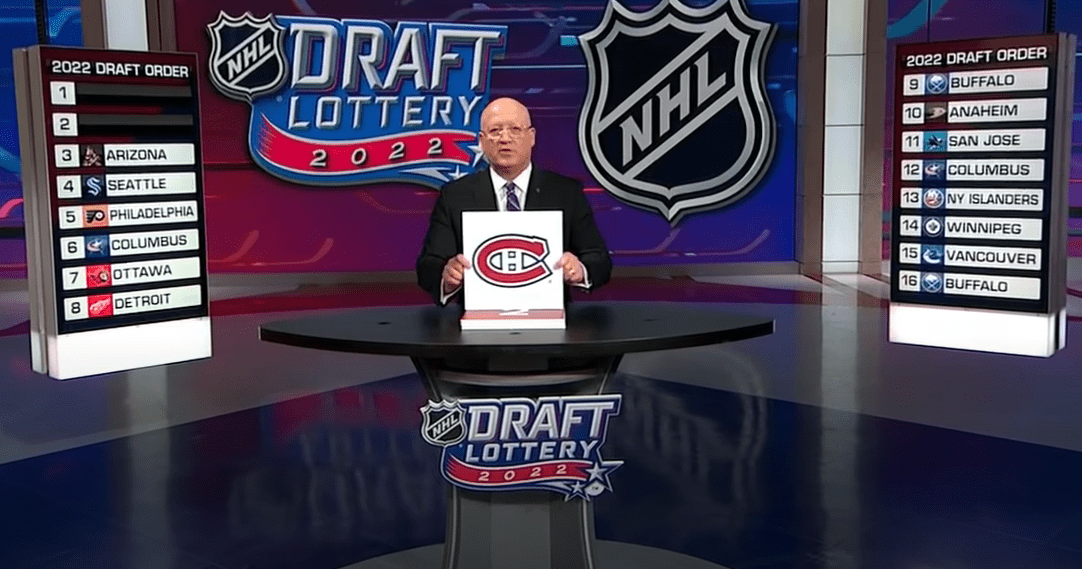Montreal Canadiens
Creative Trade Options For Canadiens To Solve Forward Logjam

The Montreal Canadiens are still looking to free up some roster spots and move out some veterans and they have some creative options available to them to make some deals.
Hockey Insider Elliotte Friedman mentioned the Montreal Canadiens in two separate paragraphs in his latest edition of 32 Thoughts.
He briefly discussed Arber Xhekaj’s quick ascent as a fan favourite, as well as the Nicolas Beaudin trade. However, he also added a single sentence to the end of the Beaudin blurb that gives Canadiens fans a sense of what may happen next when it comes to the overabundance of forwards in the lineup.
“They remain interested in solutions to their forward logjam.” wrote Friedman.
With Joel Armia and Juraj Slafkovsky’s nearing a return to play, the Canadiens will have 15 available forwards, which explains why Kent Hughes may be interested in shaking up the roster.
The Options
The Canadiens can simply assign Juraj Slafkovsky to the AHL, but that alone would not be enough to clear up the logjam. It’s also worth pointing out that Slafkovsky has put up some pretty good underlying numbers to start his NHL career, and assigning him to the AHL for the sole purpose of giving a veteran player ice time would be a harsh outcome.
Rather than assigning Slafkovsky to the minors, the Canadiens can trade a player such as Rem Pitlick or Michael Pezzetta, which shouldn’t be overly complicated seeing as they both have reasonable cap hits.
Pitlick is probably the most enticing player of the two, and despite still having two years left on his contract, has shown enough offensive prowess in the league to convince a general manager he could become a cheap source of tertiary offence.
If Pezzetta or Pitlick do not get any bites on the trade market, the Canadiens can easily improve their bait by absorbing an additional contract or two, seeing as they can sign five more players before they reach the 50-contract limit.
Several teams are nearing the 50-contract maximum, including the Toronto Maple Leafs, Vegas Golden Knights, and Philadelphia Flyers. The San Jose Sharks, St-Louis Blues, and Tampa Bay Lightning may also be interested in shedding a contract, seeing as they’re quickly approaching the maximum allowed under the CBA.
Getting Creative
Moving players signed to cheap contracts is rather easy, but it’s a poorly kept secret that Hughes would rather move a veteran player with a higher average annual value.
Players such as Joel Armia, Evgeni Dadonov, Christian Dvorak, Mike Hoffman, and even Sean Monahan, fit the bill.
But very few teams can absorb contracts in the 5 million dollar range, which means John Sedgwick and Co. may have to get creative, just as they did at last year’s trade deadline.
One solution is salary retention.
As per the CBA experts at CapFriendly, retained salary trades have to meet the following conditions.
- The percentage retained cannot exceed 50 percent of the player’s salary (including all bonuses) and Salary Cap Hit.
- The same percentage must be retained for both the player’s salary and Salary Cap Hit, and cannot be modified.
- All teams are limited to a maximum of 3 retained salary contracts per season.
- Teams cannot retain an aggregate amount of more than 15 percent of the Salary Cap Upper Limit.
- Players’ contracts are limited to 2 retained salary transactions per contract.
Even though the Montreal Canadiens currently have the second-highest projected salary in the league, 11 million dollars over the allowed salary cap of 82 million dollars, they can retain salary in up to three trades.
With Carey Price and Paul Byron on Long-Term Injury Reserve (LTIR), the Canadiens currently have a little over 2.5 million dollars in relief space. That means that, on top of being able to retain on salary, they’d also have the flexibility to take on contracts and salary to make the deals even more enticing for other teams that are in a bind.
Further to that, if the Canadiens trade a player with retention, they still gain extra LTIR relief space, opening them up to weaponize their cap space even further. As an example, if the Canadiens were to trade a $5M forward at 50% retained for picks, Montreal would effectively gain $2.5M in LTIR relief space, bringing their total relief space to about $5M. Plenty of space to work with as a cap broker down the line.
But there’s more.
Next Step
Retaining salary gives teams a lot more leverage in deals, however, the closer the schedule gets to the trade deadline, the better it becomes for the teams that are buying players, but there’s a catch.
Teams that are currently using LTIR do not accrue cap space during the season, which means that they could make a trade today or in March and there wouldn’t be a proration of their cap situation. So a trade with such a team (there are currently 13 clubs other than the Canadiens using LTIR) could be just as valuable today as it would be in March; if not more valuable as prices aren’t crazy yet.
For clubs with cap space, they would be more inclined to let their free space continue to accrue so that they have more room to incorporate prorated contracts the day of the NHL trade deadline.
Even though the Montreal Canadiens technically have no cap space and are intent on moving players with contracts that may seem out of the price range of certain teams, there will be many creative ways for them to make deals work this season. Be it through LTIR, salary retention, or absorbing expiring contracts , the Canadiens are open for business on the NHL trade market.
(Salary information via CapFriendly)










